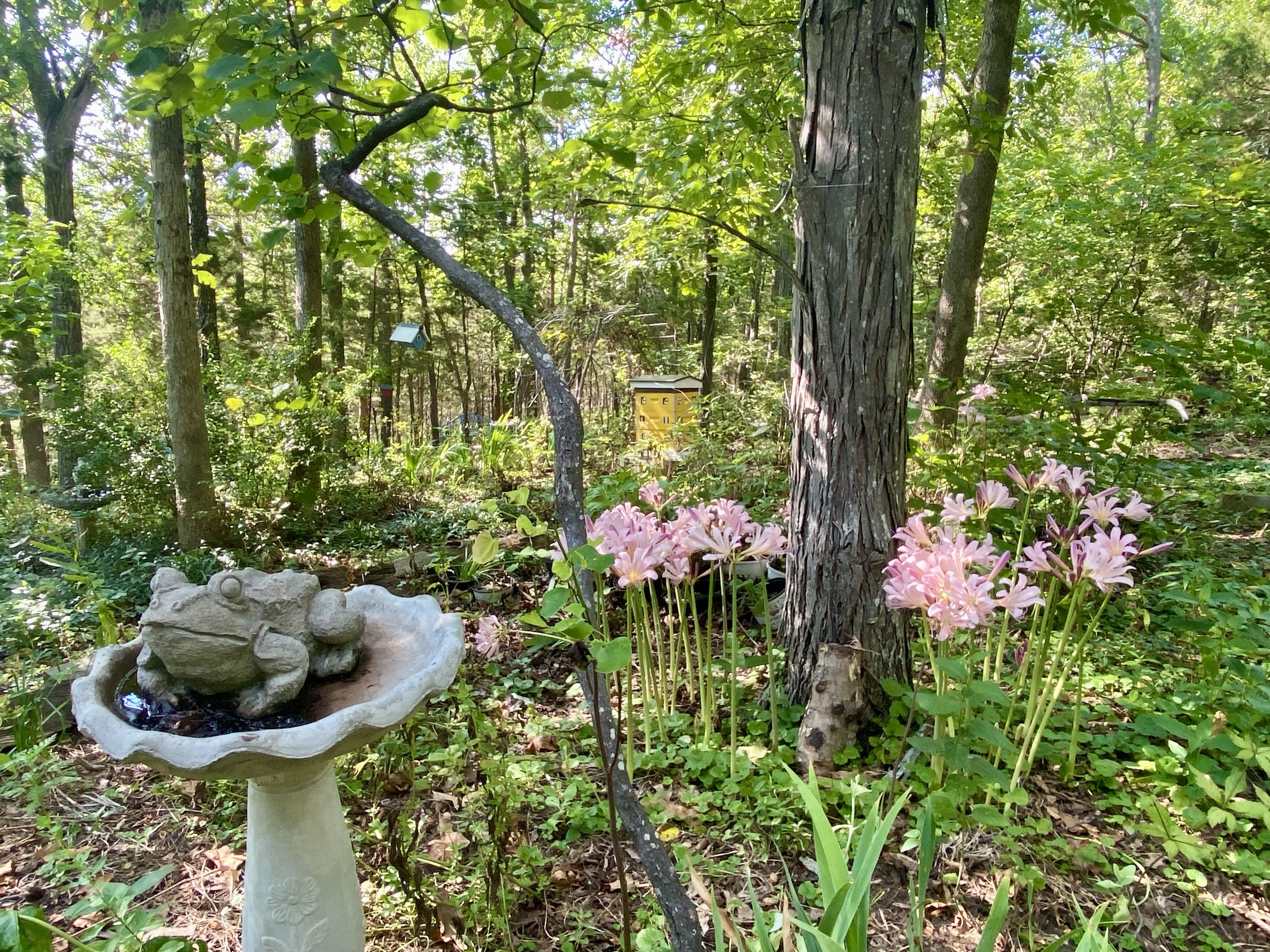August Gardening Chores
/August is a good time to map out spots for more surprise lilies. (Charlotte Ekker Wiggins photo)
August Gardening Chores
The record hot temperatures of this summer so far have kept me outside only to water and check on my bees. Otherwise it’s been just too hot to plant. With soil parched and dry, plants have little chance of surviving.
1. This is a good time of the year to prepare for plant sales. For the last few years I have been focused on adding plants that survive the August hot temperatures and continue to bloom into fall. They also have to be perennials, or plants that return on their own every year and if they are native plants, even better. And they have to be accessible and attractive to pollinators.
2. As surprise lilies make their delightful appearance throughout my garden, this is a good time to mark other spots to add bulbs. I try to place surprise lilies along paths and in unexpected spots so that they continue to delight, and surprise, year after year.
3. As hot temperatures return later this month, remember to water for summer conditions.
Water plants at root level, which means no sprinklers. Use underground wands and move the wands to saturate soil. Gardens need an inch of rain a week. Don’t forget established shrubs and older trees, they also need moisture delivered to their roots to make sure they make it through the record hot August temperatures.
Water potted plants daily; if temperatures are once again hitting record levels, maybe twice a day and move them into shade. Add compost to keep the potted soil healthy. Fertilize once a week, especially after a rain.
4. If you didn’t get to planting your vegetable garden this year, at least toss a few buckwheat seeds to help improve your soil for next year. Buckwheat will sprout in about 6 weeks and will be welcome fall food for pollinators as well.
5. There’s still time to get some favorite short-growing vegetables in the ground: beets, cucumbers, dill and zinnias can still get planted before our first hard frost.
6. If you haven’t been using your fresh herbs, this is a good time to start. Most may have flowered and lost some of their potency but they still can be added to salads and other summer dishes. Rosemary and chamomile can be harvested and used in bloom. I chop up and freeze some of mine in ice cubes for winter use in soups.
I have a few plants stashed waiting to get in the ground! (Photo by Charlotte Ekker Wiggins)
7. Why yes, I also have a stash of plants that haven’t made it into the ground yet. There’s no point planting them when the ground is so dry so I keep them watered until conditions improve. Remember to periodically touch their soil to make sure you are keeping them hydrated.
8. My tomatoes are finally ripening. Try to keep them evenly watered to minimize cracking. And enjoy!
9. Have peonies you want to divide? Wait until after a good rain but you can start dividing them now through September. Bury the root “eyes” no more than an inch beneath the soil; if you bury them deeper the plants won’t flower. If you have to move peonies without rain, use a hose to soak the soil around the plant first before you try to dig it up.
10. You can also dig up daylilies and iris now to divide and re-plant. Again I would wait until after a good rain. Remember to use gardening gloves so your hands don't get cracked. If you still need to move the plants, at least water the area with a hose first so you don’t rip roots when you try to dig them up.
11. Start saving seeds for next year. Marigolds, zinnias and sunflowers have a lot of seeds that can easily be stored.
12. I am also developing new flower beds for next year by removing starts, adding cardboard and mulching.
13. Hot temperatures can prompt trees to drop leaves early. Leave leaves on the ground to return nitrogen to the soil. If you are worried about them sitting on grass, set your mower to a higher setting and cut them up when you mow. Leaves are a wonderful source of soil amendments. They also work well as mulch, helping to retain water when leaves are underground or under mulch.













